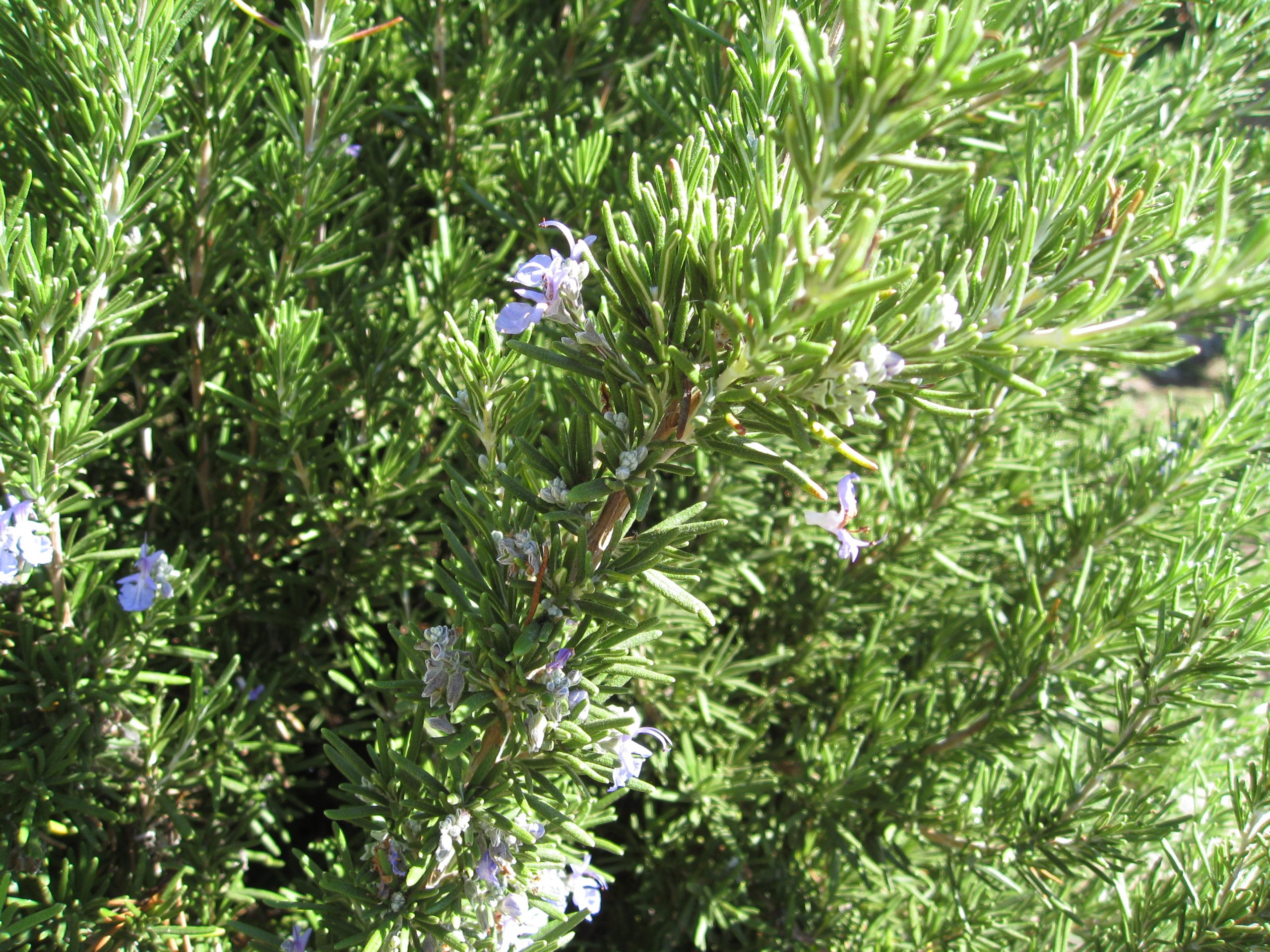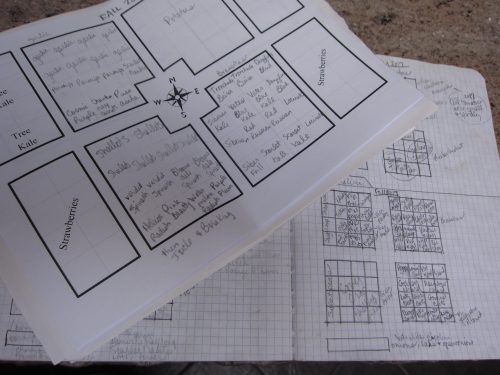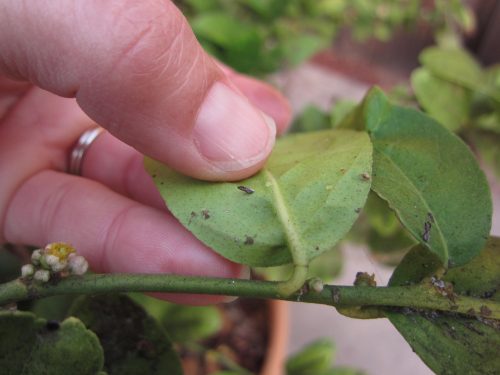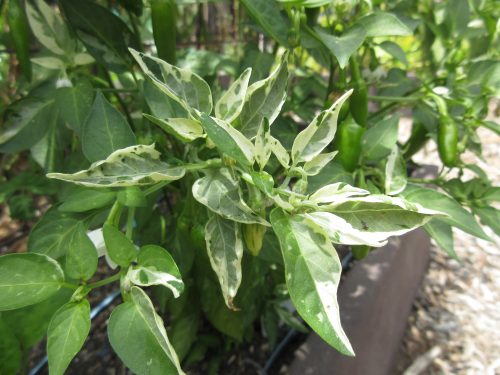These Dog Days of summer are challenging. It’s too hot to plant or work in the garden, but garden is starting to look ragged as plants near the end of their life cycle. What to do? It’s time for a little clean up.
Summer pruning helps in so many ways. It clears away dead or diseased plant material. It keeps home-orchard fruit trees in check. It refreshes the garden with a snip or two, here and there. Best of all, it can be done in the late afternoon or evening, after the heat of the sun is over.
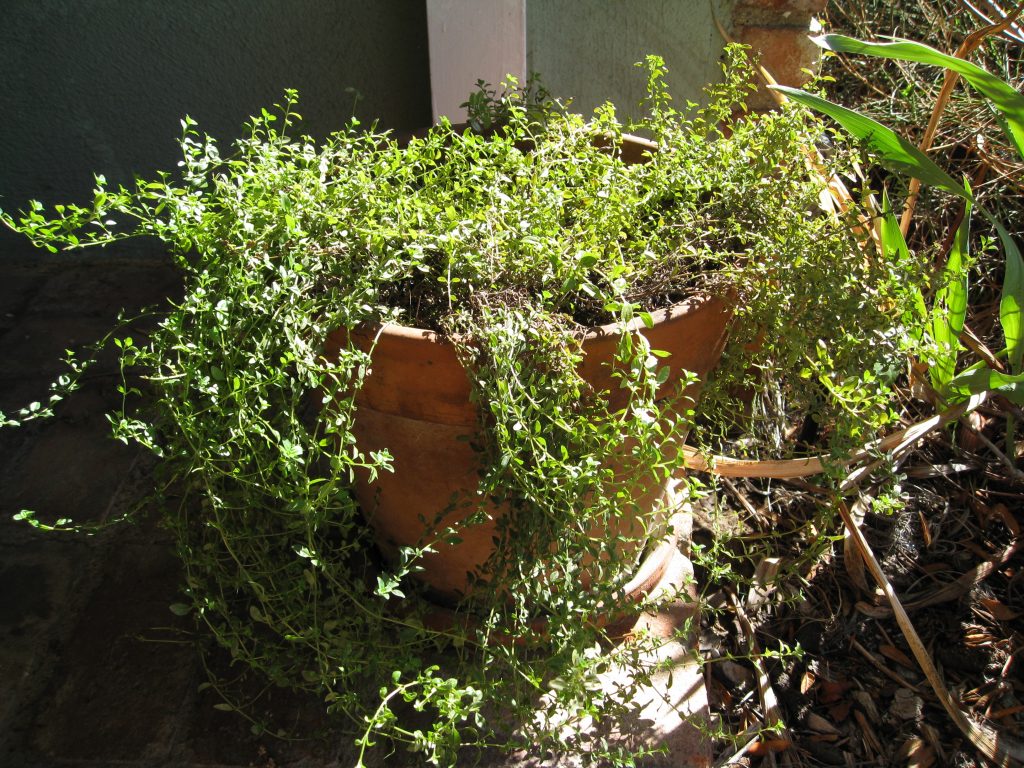
Timing will differ depending on where you live. Here in Los Angeles, our summer is everyone else’s fall. Leaves start dying back, herbs get leggy. A good hair cut every once in awhile is good for your plants. Take this thyme above. It’s long and leggy, instead of compact and bushy. The center is woody and exposed. So we’re giving it a haircut.
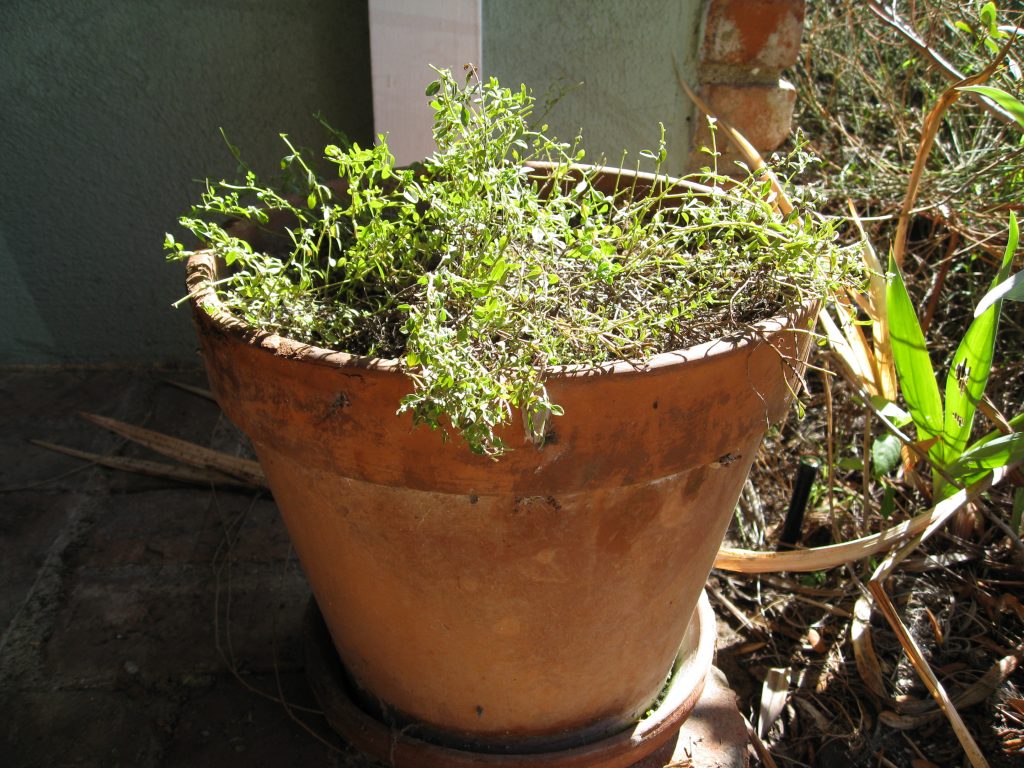
We cut back the leggy limbs to just a few inches above the woody stems. Since thyme grows from the cut end, these cuts will stimulate growth to fill in the spaces. It may look a little bare for a week or so, but soon it will be lush and full again.
Fruit trees – many fruit trees benefit from summer pruning to control height. As long as it’s not raining where you live, you can do light summer pruning anytime this month or next. Just make sure not to cut away major branches, which may expose previously shaded bark to the sun. Sun scald can kill a tree, so cover the newly exposed bark with whitewash or newspaper until the foliage grows in to cover.
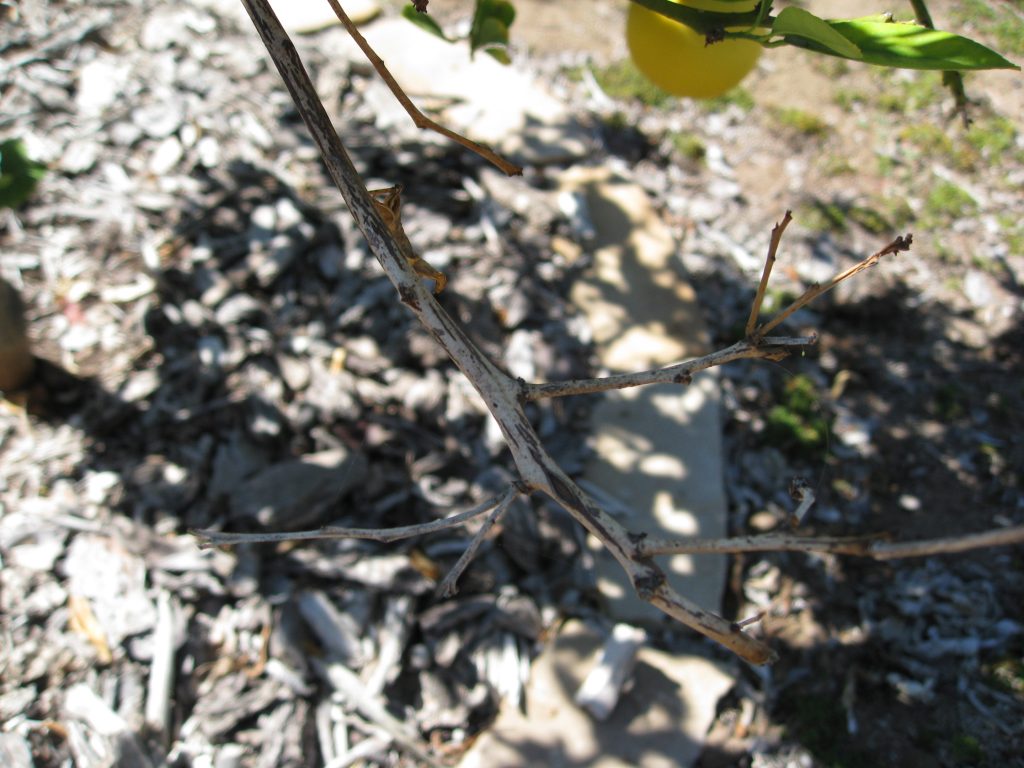
Herbs – most herbs can be pruned right after they finish flowering. We’ll be cutting back this rosemary shrub by taking about 12″ off all the way around (aggressive pruning is required for woody herbs like rosemary and lavender). That will prevent sprawl (you’ll recognize it as a gap or fault line running through the plant as it splits open over time).
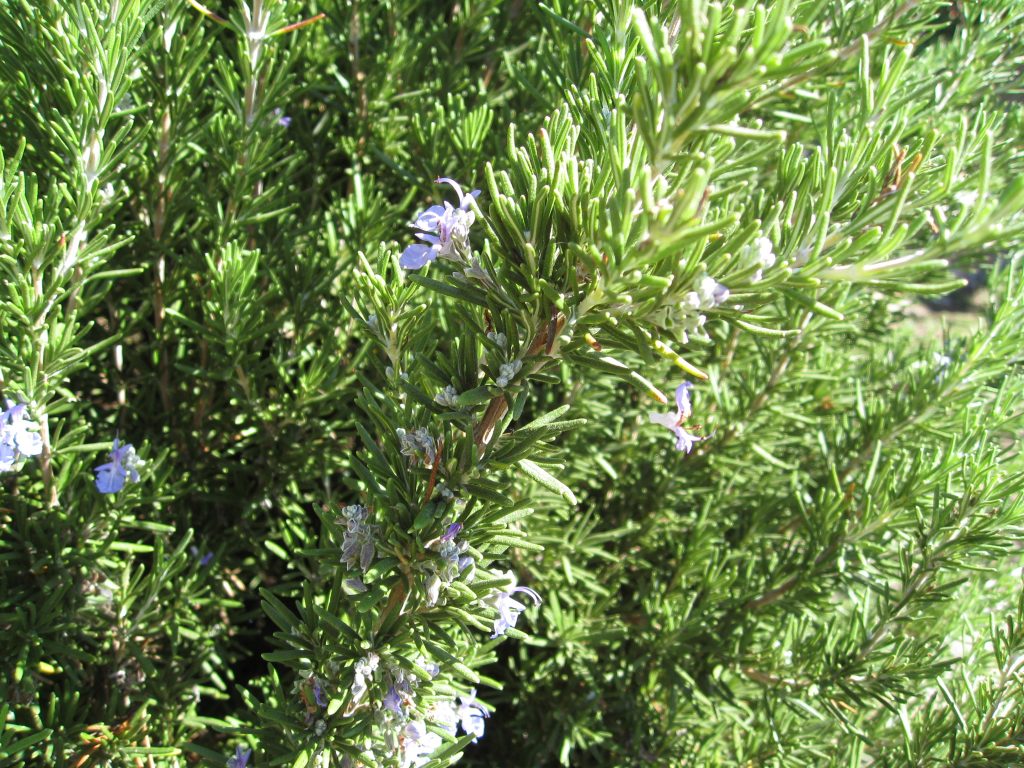
Mint is another herb that needs pruning when it gets leggy and sad. In the photo below, you’ll see the outer stems need to be cut back as fresh, new growth in the center fills in. Cut back stems all the way to soil level after it flowers (let the bees have them for awhile first).
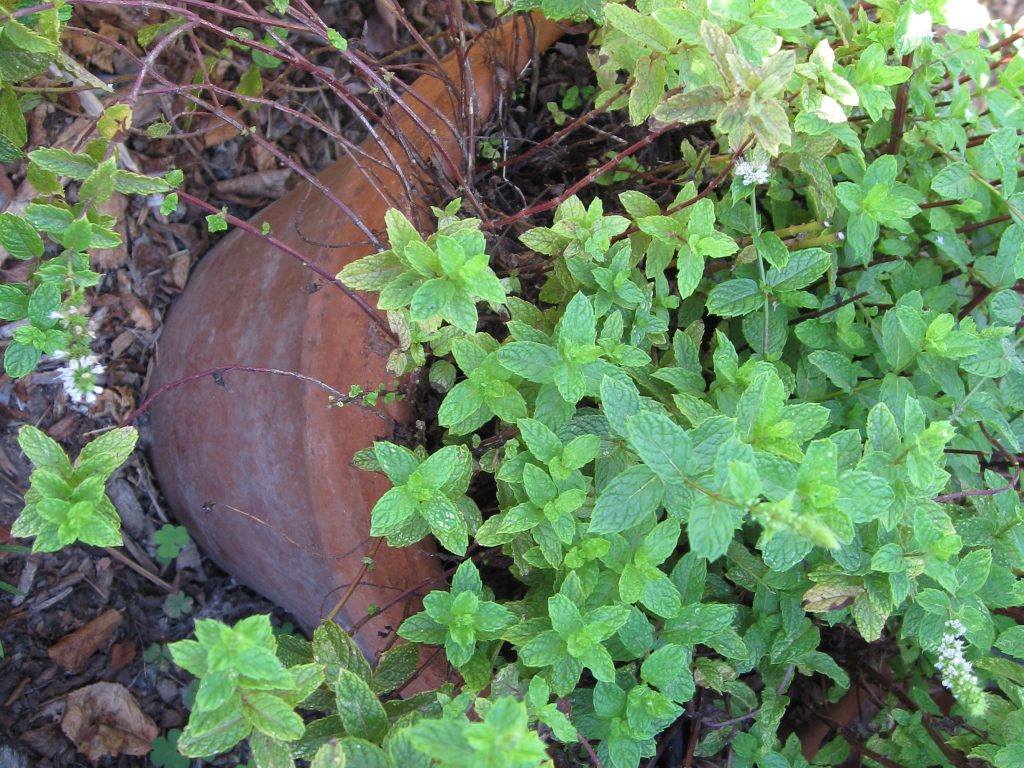
Deadheading – cutting back flowering stems can be scary for some gardeners. It can feel like we’re killing the plant, but it actually helps it grow back more vigorously and with less dead material in the center. Take yarrow, for example.
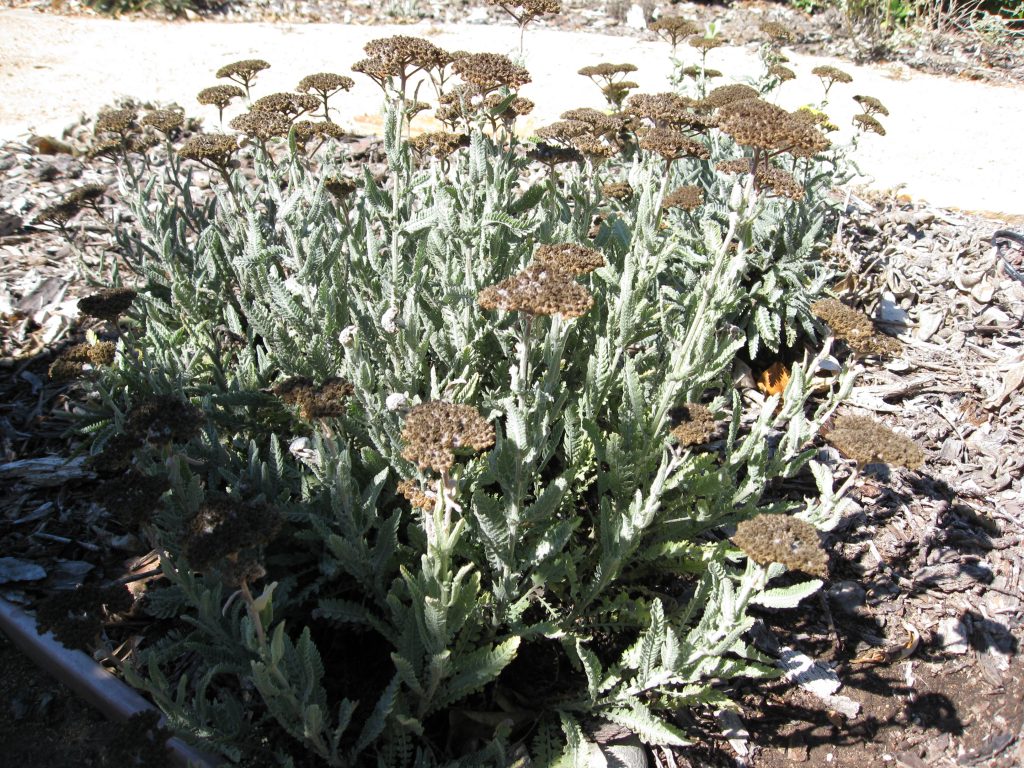
By cutting away the spend flowers all the way to the base of the plant, we expose some new blossoms in the making, and discover new buds and shoots forming at the base.
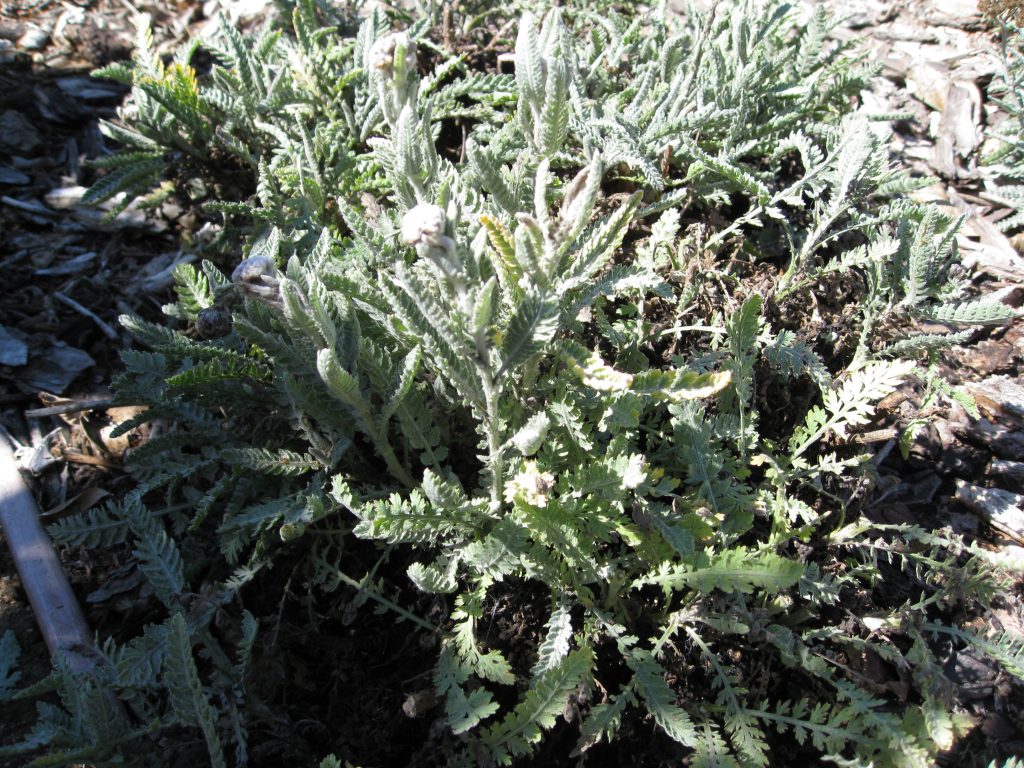
If you’re shy about pruning, remember to step back and look at your work, or go away for a day and come back to see if you have more courage to tackle what’s left. Take a class (we do every year to keep up our courage) and don’t be afraid. Your garden will thank you in the end.

